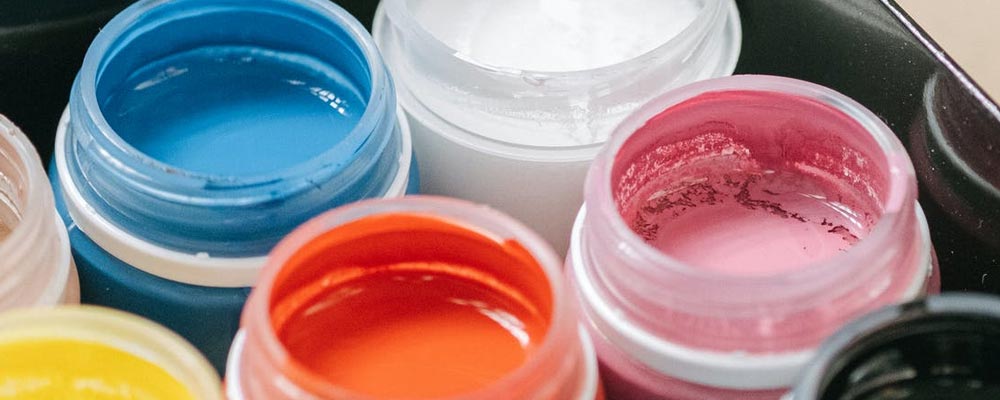Application & market of titanium dioxide
Titanium dioxide is a white powdery solid obtained from titanium ore through the sulfuric acid method or the chlorination method. It is considered to be a white pigment with good performance in the world. Titanium dioxide refers to the titanium dioxide whose surface has been treated with inorganic or organic to overcome the original application defects of titanium dioxide. It has the best opacity, best whiteness, gloss, excellent weather resistance, hiding power, dispersibility and other weak, chemical Performance, widely used in industrial fields such as coatings, plastics, paper, rubber and ink, and food fields.
Titanium dioxide is divided into pigment grade and non-pigment grade according to its use. Pigment-grade titanium dioxide is mainly used for white pigments. According to the crystal state, it can be further divided into anatase titanium dioxide (A type) and rutile titanium dioxide (R type). Among them, rutile titanium dioxide has better chemical stability. It is mainly used for high-grade outdoor coatings, light latex coatings, high-grade paper and rubber materials.
Anatase titanium dioxide has the advantages of high whiteness, high refractive index, large difference in refractive index from fiber-forming polymers, non-toxic and harmless, low production cost and wide raw material sources. It can be used as an additive in the production of matting cotton fiber Is applied.
Non-pigment grade titanium dioxide has purity as its main purpose. It is divided into enamel grade, ceramic grade, electric welding grade and electronic grade. Its high temperature resistance and optical properties play a major role.
The sulfuric acid method is the world’s earliest industrialized production method of titanium dioxide. The process mainly includes the following aspects: pulverization and acid hydrolysis of titanium ore materials, separation and purification of TiOSO4, hydrolysis of TiOSO4 to form insoluble metatitanic acid, washing, bleaching, Calcining and crushing, surface treatment, etc.
Advantages: The sulfuric acid method can be used to produce two kinds of rutile and anatase titanium dioxide. The process technology is mature, the equipment is simple, the raw material requirements are low, and the price is cheap and abundant.
Disadvantages: The consumption of raw materials is large, the utilization rate is low, the by-products are large, the environmental pollution is serious, and the process is complicated. With the continuous innovation of technology, this production method is constantly being eliminated by enterprises.
The chlorination method is currently a widely used method for producing titanium dioxide in industrial production. The emergence of the chlorination method can not only produce high-quality titanium dioxide, but also solve the problem of the long process flow of the sulfuric acid method, reduce the emissions of the three industrial wastes, and be beneficial to environmental protection. At the same time, this method is easy to realize automated production, which is in line with the requirements of modern enterprises. Production requirements.
Application of Titanium Dioxide
Coatings, papermaking and plastics are the three main application areas of titanium dioxide. Other application areas include ink, chemical fiber, cosmetics, rubber, food industry and medicine. The use of titanium dioxide for non-pigment is mainly in the fields of enamel, ceramics, capacitors, welding rods, catalysts, and the field of nano-titanium dioxide that requires optical properties of titanium dioxide but does not require its covering properties.
- Coating
At present, coatings are the largest application field of titanium dioxide. The TiO2 consumed by the coatings industry accounts for 58% to 60% of the total consumption of titanium dioxide pigments. Titanium dioxide is also the most used pigment in the coating industry, accounting for about half of the cost of coating colorants, and 10% to 25% of the cost of coating raw materials. As a kind of chemical advanced material product, coating has been greatly developed in recent years, and the total output of the industry reached 17.598 million tons in 2018.

- Plastic
Plastics are currently the second largest user of titanium dioxide pigments, accounting for 18% to 20% of the world’s total demand for titanium dioxide. The amount of titanium dioxide added to the plastic will vary with its varieties and applications, generally between 0.5% and 5%. At present, the annual output of plastic products is more than 60 million tons, and the consumption of titanium dioxide is about 600,000 tons. Titanium dioxide has excellent weather resistance, hiding power, dispersibility and other physical and chemical properties, which greatly meets and adapts to the production standard requirements of plastic industrial products for titanium dioxide performance and quality.

- Papermaking
The paper industry accounts for 11% of the total consumption of titanium dioxide. The application of titanium dioxide in the paper industry is very similar to that of the plastics production industry. Both are used as basic pigments. In the paper industry, titanium dioxide can also be used as a filler. It is used to improve the optical properties of paper to better enhance its opacity, including improving its brightness, whiteness, smoothness, uniformity, etc.

Performance comparison of different types of titanium dioxide in the field of papermaking
| Paper Classification | Rutile | Anatase | Remark |
| Decorative paper | √ | High anti-aging requirements | |
| High ash paper | √ | The hiding power of anatase titanium dioxide does not meet the requirements | |
| Low ash paper | √ | Good opacity required | |
| Coinage paper | √ | Good opacity required |
- Ink
The whiteness quality of titanium dioxide is guaranteed, the water resistance is strong, the hiding power is large, and the weather resistance, heat resistance and chemical properties are very stable. In the ink industry, titanium dioxide is a necessary production material. Titanium dioxide in the ink not only has the function of improving gloss and aesthetics, but also can improve the properties of the ink.
- Masterbatch
Color masterbatch is developed in modern times and is used in coloring products of plastics and other systems. Its principle is to load an excess amount of pigment in resin to prepare a polymer compound for coloring. The main components include: resin, pigment, dispersant, etc. The core of the development of color masterbatch technology is the compatibility of pigments, dispersants and resins. The goal is to increase the pigment content and coloring effect in the color masterbatch. The key is to improve the dispersion of the pigment in the color masterbatch. Titanium dioxide is widely used in industries such as color masterbatch, especially in some high-end color masterbatch industries, it is one of the necessary coloring raw materials.
- Chemical fiber
The chemical fiber industry (especially anatase) is another important application field of titanium dioxide. Since the molecules in the chemical fiber industry are neatly arranged, the fiber surface is smooth, has a dazzling luster, and is translucent, so it is necessary to add a matting agent before spinning. Titanium dioxide is the most ideal matting material in the synthetic fiber industry.
- Denitration catalyst
Denitration catalyst generally refers to the catalyst used in the SCR denitration system of power plants. In the SCR reaction, the reducing agent will selectively react with the nitrogen oxides in the flue gas at a certain temperature.
From a global perspective, the global effective production capacity of titanium dioxide is about 7.2 million tons, and CR10 (the company with the top 10 effective production capacity) accounts for 65%, mainly in North America, Western Europe, and Japan.
Article source: China Powder Network
